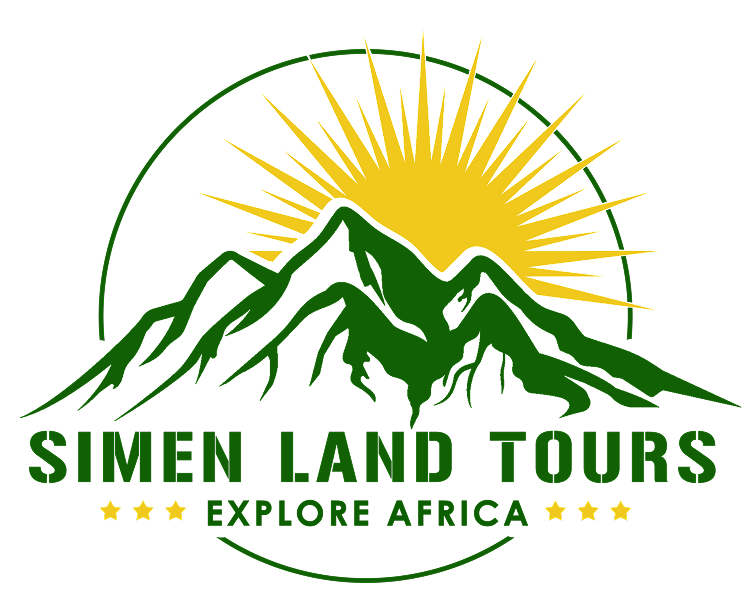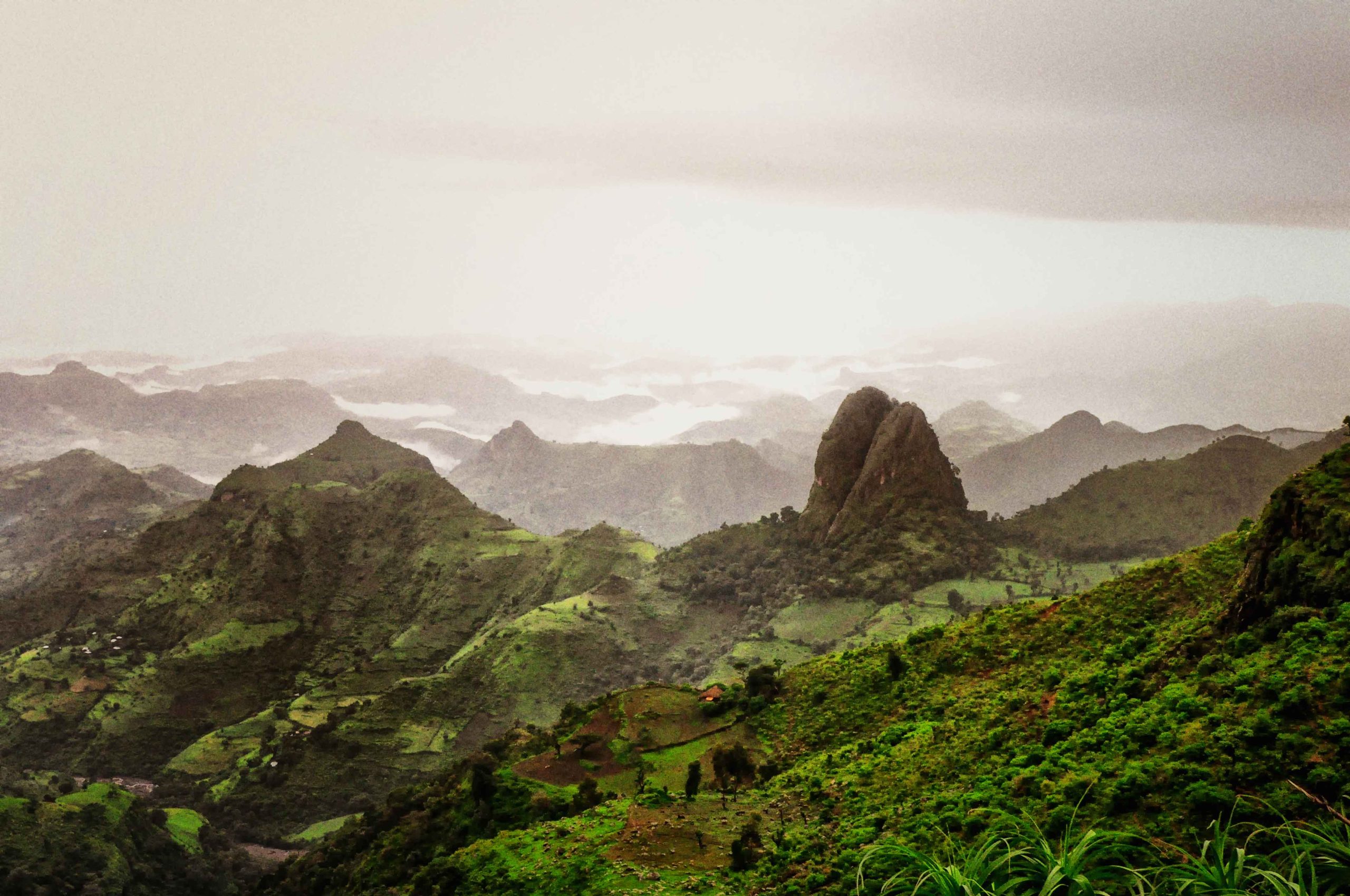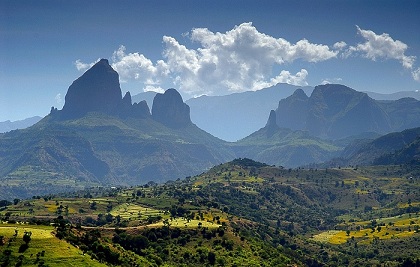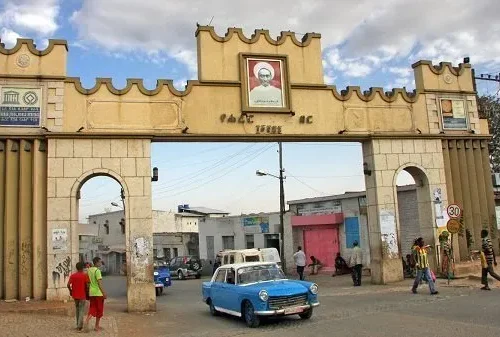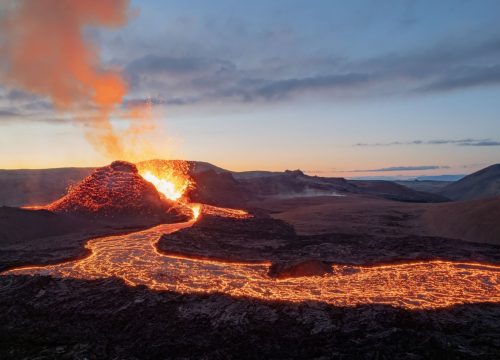Simien Mountain-6 Days
Explore Tours
Day 1: Sankaber (3250m), 3-4 hours
An early start from Gondar takes us along a good gravel road to the park headquarters in Debark (100km, 3 hours by 4×4), where we obtain permits and meet our knowledgeable local guide and scout. We drive (1hour by 4×4) into the National Park before starting our first day introductory walk. This is an easy hike along the northern edge of the escarpment with impressive views over the foothills and plains of northern Ethiopia. You will encounter gelada baboon along this hike, and will be welcomed to Sankaber campsite with tea and coffee, where your camp will be prepared in advance of your arrival.
Day 2: Gich (3600m), 5-6 hours
After a hearty breakfast we follow the northern escarpment eastward, before descending a little into the Kaba valley. We then climb to reach Gich Abyss and continue over a narrow ridge to a cliff, which reveals a spectacular view of the abyss and Simien foothills to the north. To the east we have striking views of a large waterfall, where the Jinbar River plunges 500m into the abyss. Two hours further on, we break for lunch on the banks of the Jinbar River. From the valley, we ascend through gelada baboon-filled fields of barley to reach the idyllic village of Gich. From Gich village it is a short walk to Gich camp, perched dramatically above the village and an excellent place to spot lammergeyer, black kite and thick-billed raven. After a relaxing afternoon (optionally punctuated by a coffee ceremony), we take a short hike to Kedadit (3760m) to enjoy the sunset and gorgeous shaded landscapes down the cliffs of the escarpment, before returning to camp for a freshly prepared dinner.
Included/Exclude
Tour Amenities
Tour Plan
An early start from Gondar takes us along a good gravel road to the park headquarters in Debark (100km, 3 hours by 4×4), where we obtain permits and meet our knowledgeable local guide and scout. We drive (1hour by 4×4) into the National Park before starting our first day introductory walk. This is an easy hike along the northern edge of the escarpment with impressive views over the foothills and plains of northern Ethiopia. You will encounter gelada baboon along this hike, and will be welcomed to Sankaber campsite with tea and coffee, where your camp will be prepared in advance of your arrival.
After a hearty breakfast we follow the northern escarpment eastward, before descending a little into the Kaba valley. We then climb to reach Gich Abyss and continue over a narrow ridge to a cliff, which reveals a spectacular view of the abyss and Simien foothills to the north. To the east we have striking views of a large waterfall, where the Jinbar River plunges 500m into the abyss. Two hours further on, we break for lunch on the banks of the Jinbar River. From the valley, we ascend through gelada baboon-filled fields of barley to reach the idyllic village of Gich. From Gich village it is a short walk to Gich camp, perched dramatically above the village and an excellent place to spot lammergeyer, black kite and thick-billed raven. After a relaxing afternoon (optionally punctuated by a coffee ceremony), we take a short hike to Kedadit (3760m) to enjoy the sunset and gorgeous shaded landscapes down the cliffs of the escarpment, before returning to camp for a freshly prepared dinner.
From Gich camp we pass endless fields of giant lobelia before the high pasture gives way to the towering cliffs of Imet-Gogo (3926m). An optional extended route from Gich camp to Imet-Gogo meets the escarpment further north, at the gelada baboon-covered, 3785m-high viewpoint of Saha, before following the precipitous cliffs southwards up to Imet-Gogo.
Time spent at Imet-Gogo is rewarded by superb views over the mountain valleys below and the strikingly-shaped domes in the distance. We then descend into the Jinbar River Valley; the contrasting view of Imet-Gogo and the volcanic landscape from here gives the impression that vast chunks of the mountains have been blown-away. We climb from the valley to the summit of Inatye (4070m), a spectacularly scenic spot for lunch. After lunch we descend for about two hours along a steep trail to reach Chennek. We arrive at Chennek camp in plenty of time to appreciate the spectacular views in all directions, and to spot Walia ibex grazing close to the edge of the escarpment and sometimes skirting the edges of the campsite. The day concludes with a well-deserved dinner served in gratifyingly generous proportions!
We begin our trek towards the distant Ras Dejen range by ascending eastwards from Chennek camp, our climb of Buwahit pass (4200m) affording fine views of the verdant valley that we are leaving, of Buwahit peak to our right and ahead over the very different landscape of the Menesha River valley and its tributaries to Ras Dejen beyond.
From the viewpoint we descend steeply into the valley, passing through the village of Chiro-Leba, before joining walking alongside a tributary along a path that leads eventually to to the Menesha river.
We then branch away from the river to ascend to the camp at Ambiko, where we spend the night in preparation for our ascent of Ras Dejen early the following morning.
Our climb of more than 1000m to the peak of Ras Dejen begins with breakfast before dawn. We leave Ambiko by following the valley, passing the village of Misma (3500m) before reaching the crest of a ridge that gives excellent views of the sun rising over a larger valley below. We continue to follow the path eastwards in the direction of Ras Dejen’s rocky west face. With the sun’s rays beginning to reach over the peaks ahead of us, we follow a wide ridge to reach a corrie surrounded by three imposing summits. Following a gulley to the left, we climb up to the highest of them, Ras Dejen, to enjoy views into the distance in all directions, with the rocky features of the range’s east face highlighted by the morning sun.
After allowing plenty of time to rest and appreciate this unique place, we return to Ambiko by the same route. We spend the afternoon recuperating over a large lunch and a well-earned rest.
We return to chiro leba by re-tracing the path that we followed on Day 4. With the sun at our backs as we walk westwards, this trek provides an excellent opportunity to contrast the peak of Buwahit – ahead of us to the south-west for most of the walk – and the western escarpment of the National Park, with the Ras Dejen range that we walked towards on Day 4.then drive back to Gondar.
